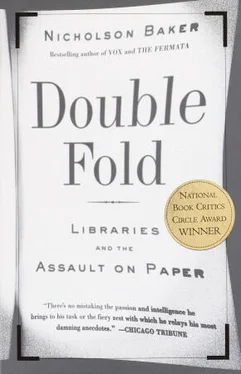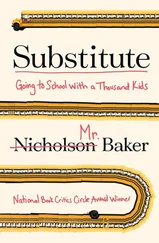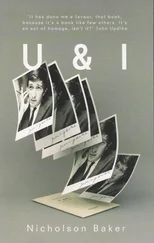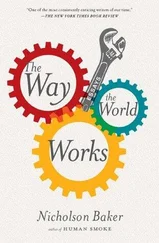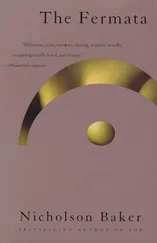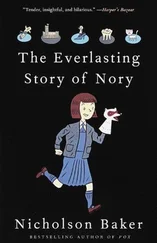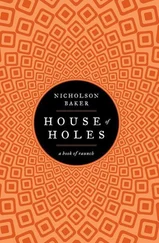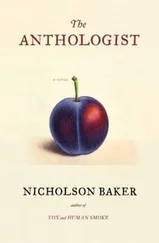For example, the front page of my bound World-Telegram for February 3, 1934 (photographed by Recordak in the thirties and held in microfilm by the New York Public Library and the Library of Congress) has a big right-hand headline, O’LEARY OUSTED BY LA GUARDIA; MOSES TAKES UP TRI-BORO POST, accompanied by prominent pictures of three men recently fired by Mayor Fiorello La Guardia. The microfilm’s big right-hand headline, by contrast, is STRIKERS ARM WITH BLACKJACKS; MAYOR APPOINTS TAXI ARBITRATOR, and the only picture is a tiny one of Emmett Toppino, who planned to run the sixty-yard dash at Madison Square Garden that night. Rudy Vallee’s divorce problems made the front page in my paper edition—“Supreme Court Justice Richard P. Lydon today reinstated Fay Webb Vallee’s suit to restrain her husband, crooning Rudy Vallee, from divorcing her in Mexico”; but in the microfilmed later edition we read instead of the disturbing death of Mrs. Annie Smith, “who rocked too far forward last night and fell into the fire.”
The January 1, 1899, Chicago Tribune provides another instructive example. In the microfilmed copy of the Tribune for that day, a half-inch strip of text is missing from the left margin of the image. The microfilm’s headline reads:
ST HOURS OF
SPANISH RULE
so’s Flag to be Lowered
the Forts and Public
Buildings of Havana
at Noon Today.
The article itself, cabled in by Richard Henry Somebody — his surname is gone — clearly had to do with the end of the Spanish-American War (a war created by newspapers, incidentally, just as Citizen Kane suggests), but the text is too corrupt to follow. There is a nine-frame political cartoon running across the middle of the page entitled “Pen Pictures of the Leading Events of the Week,” but the first box of the cartoon isn’t comprehensible:
ENTLE ART
OISONING
URAGED
AL.
Turning now to the massive Chicago Tribune volume owned by the Cartoon Research Library at Ohio State, formerly of Harvard (this one bearing a bookplate that said it was paid for out of the bequest of “Mrs. Anne A. P. Sever, Widow of Col. James Warren Sever, Class of 1817”): everything for January 1, 1899, is legible; Alfonso’s flag, as it happens, was to be lowered at noon. Moreover, the page Harvard kept safe for a hundred years differs substantially in content from the text of the microfilmed copy. One of Harvard’s above-the-fold headliners was a long account of the heroic efforts of Henry Nehf, a druggist and volunteer fireman from Terre Haute, Indiana, whose body had been found in the remains of a burned and collapsed building, his right arm over his head, as if to fend off the ceiling, and his left around the nozzle of a fire hose. When Nehf had disappeared twelve days earlier, he had at first been suspected of starting the fire or otherwise being on a “debauch”; now, he was a hero. Nehf’s watch was stopped at 6:08. “It is not an unreasonable conjecture that the falling débris which stopped the watch caused his death, as the watch was in a vest pocket over his chest, which was crushed in,” wrote the unflinching reporter. Later that day, however, in the edition that was later microfilmed, the article was drastically shortened to make room for coverage of a gas explosion in Hartford City, Indiana. A world that keeps only microfilm for January 1, 1899, will be a world that does not know that Henry Nehf, martyr druggist, owned a watch that stopped suddenly at 6:08.
Very often, when I have been able to check the microfilm of a big-city daily against an original that was discarded from some library, I have found editional differences. The existence and uses of these variations were once well-known: Alfred McClung Lee’s classic book The Daily Newspaper in America (1937) quotes an early textbook of journalism:
News is selected
1
for each edition with a nicety of judgment as to values, each newspaper keeping in mind the territory that is covered by the edition. Mail editions, intended for out-of-town readers, will emphasize the national and state news…. City editions… will lay emphasis on the local news as far as its value justifies that action. Late afternoon editions concentrate on the sports scores and decisions. Street editions, designed for the café and theater crowds of the night, herald the latest sensations with their headlines.
Joseph Herzberg, city editor at the Herald Tribune, described how it worked in 1947 at his paper:
Papers are torn apart
2
each edition on the night desk as late stories develop. The city desk may have a late fire or homicide, a terrible quake may have killed thousands abroad, or an important man may die at any hour. So highly skilled is the organization and so dovetailed the work of the separate desks that these late stories get in, although they may require many changes in the make-up of the paper. Stories are shifted from page to page, new pictures constantly arrive, space must be made for late theater or music reviews. The presses roll through the night and when they stop another twenty-four hours of world history has been set down.
The miracle is that libraries, collectively — not by design but just because it happened that way — once held on their shelves a surprising stash of this multi-editional diversity. Now (with a few exceptions) they don’t know, or don’t care, that it exists — and in fact most of it no longer does exist, because as each variant run leaves a library, copies of the unvarying microfilm take its place.
Even for the recent past, administrative indifference to variation can make for odd informational losses. The New York Times currently publishes, aside from its city edition, two national editions. Libraries hold these papers for a month or two or six and then throw them away after the microfilm arrives. But the Bell and Howell/UMI microfilm that all libraries subscribe to is a copy of the late city edition, not a copy of either of the national editions. This leads to sticky moments for reference librarians: somebody in California or Boston shows up wanting to look up a particular article or photo or ad that he or she clearly recalls from The New York Times —an article that is even listed in one of the available indexes of the Times (Gale Research dutifully indexes one national edition even though no library keeps it) — only to discover that the item is not part of the public record. Three years before, it was printed and read by thousands; now you can’t see it anywhere. James F. Green, a librarian at Michigan State, posted a newsgroup message in 1994 about this predicament; he said “there will be many times 3that I will have to try to convince a disbelieving patron that an article from the New York Times which is cited in our locally mounted Expanded Academic Index database is not available from any library.”
Early editions of the September 17, 1970, Chicago Sun-Times published a story 4that quoted off-the-record remarks by President Nixon (apparently aimed at the Soviet Union) about a crisis in the Middle East. Nixon’s staff called the paper to complain, and the remarks were cut from later editions. The early edition was probably the one that was delivered to local libraries: if one or two of them had collected the Sun-Times in paper from that era, it is very likely that Nixon’s words would have survived in their complete and original form. But libraries didn’t keep the paper; and Jeffrey Kimball, author of Nixon’s Vietnam War, has for several years sought in vain for a copy of the afternoon edition of that date. “For my new research project, a larger study of ‘smoking-gun’ documents, Nixon’s quoted remarks have a critical bearing,” Kimball wrote me, “but all I can get hold of now is the microfilm copy of the evening edition of the Sun-Times, which does not quote Nixon’s comments; that is, all microfilm copies of this newspaper for this date seem to be of the evening edition. I have been to the Library of Congress, phoned libraries around the country, contacted the Sun-Times, written old-newspaper dealers, searched the Nixon archives, talked to the Chicago Historical Society staff, and so on.” Time magazine once had the Sun-Times article in its clip files, where Walter Isaacson saw it and cited it in his book Kissinger, but since then (so Isaacson told Kimball), these files “don’t really exist anymore.”
Читать дальше
